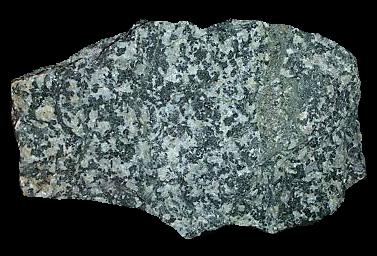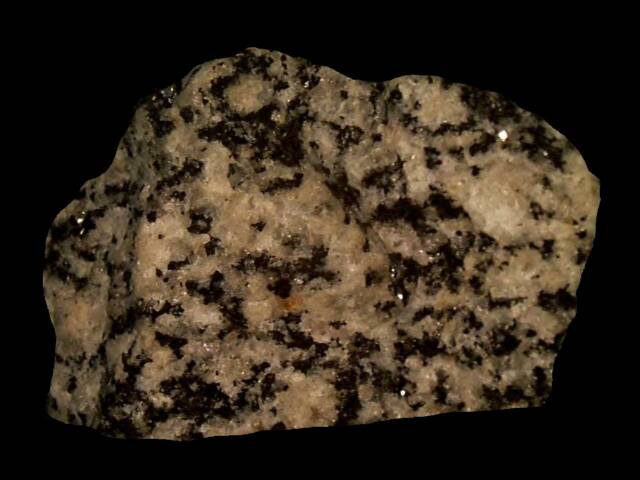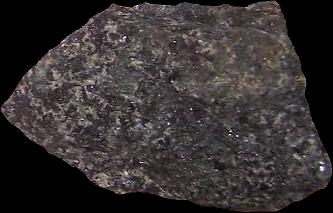Diorite is a grey to dark grey intermediate intrusive igneous rock composed principally of plagioclase feldspar (typically andesine), biotite, hornblende, and/or pyroxene. It may contain small amounts of quartz, microcline and olivine. Zircon, apatite, sphene, magnetite, ilmenite and sulfides occur as accessory minerals. It can also be black or bluish-grey, and frequently has a greenish cast. Varieties deficient in hornblende and other dark minerals are called leucodiorite. When olivine and more iron-rich augite are present, the rock grades into ferrodiorite, which is transitional to gabbro. The presence of significant quartz makes the rock type quartz-diorite (>5% quartz) or tonalite (>20% quartz), and if orthoclase (potassium feldspar) is present at greater than ten percent the rock type grades into monzodiorite or granodiorite. Diorites may be associated with either granite or gabbro intrusions, into which they may subtly merge. Diorite results from partial melting of a mafic rock above a subduction zone. It is commonly produced in volcanic arcs, and in Cordilleran mountain building such as in the Andes Mountains as large batholiths. The extrusive volcanic equivalent rock type is andesite.





